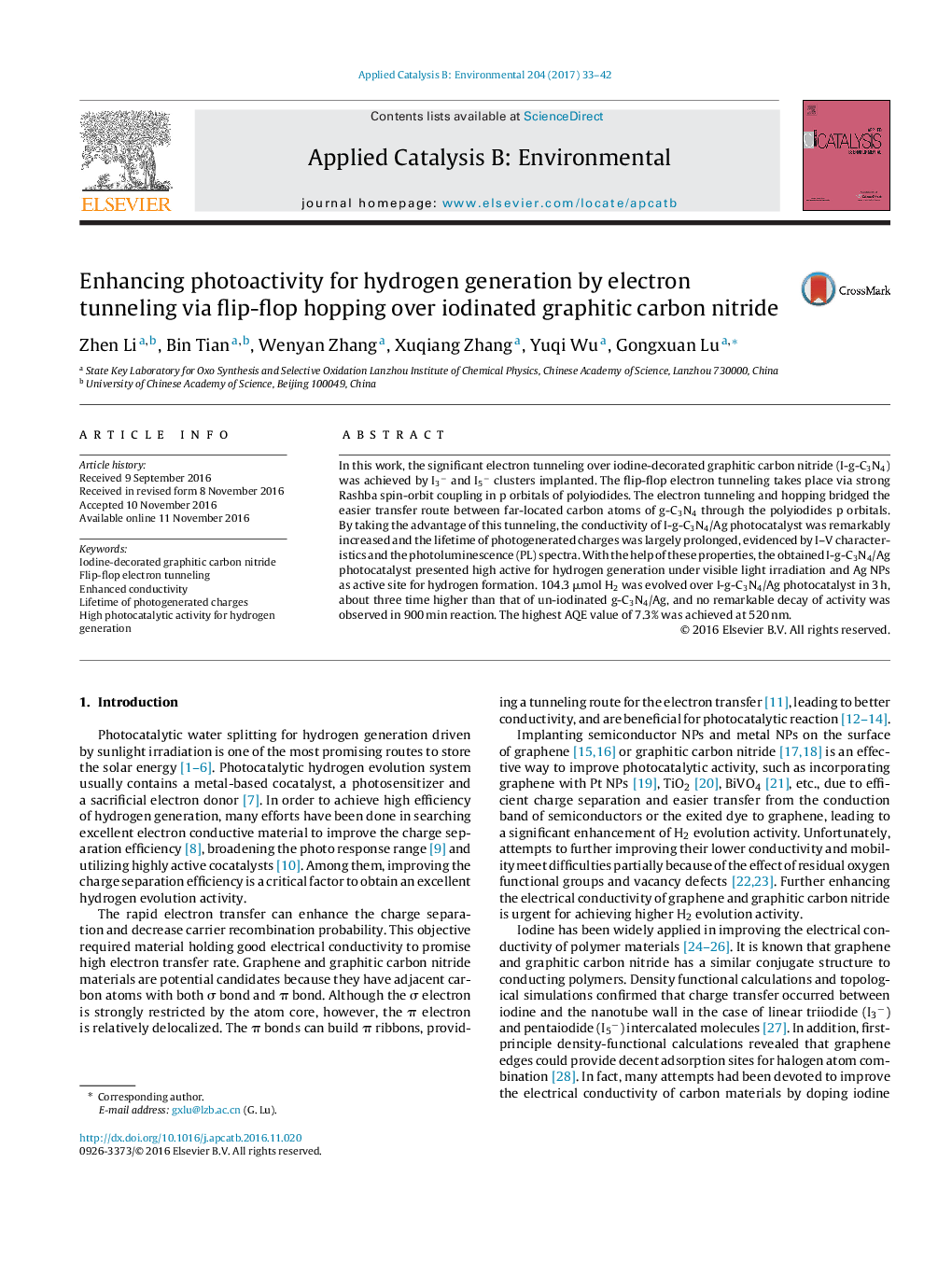| Article ID | Journal | Published Year | Pages | File Type |
|---|---|---|---|---|
| 4756192 | Applied Catalysis B: Environmental | 2017 | 10 Pages |
Abstract
The I3â and I5â decorated graphitic carbon nitride (I-g-C3N4) was formed by in situ AgI NPs decomposition driven by visible light irradiation. The species of I3â and I5â clusters could lead to a larger Rashba spin-orbit coupling with active electrons living in p orbitals. The electrons, produced by the excited EY, could hop through the tunneling between two atoms of g-C3N4 opened by the polyiodides p orbitals. It gives rise to the superior charge transfer performance, which could remarkably reduce the recombination of carrier and prolong the lifetime of photogenerated charges. With the help of these properties, a highly active H2 evolution has been achieved over I-g-C3N4/Ag photocatalyst under visible light irradiation. About 104.3 μmol H2 was evolved over I-g-C3N4/Ag photocatalyst in 3 h and no remarkable decay of activity was observed in 900 min reaction. The highest AQE value of 7.3% was achieved at 520 nm.
Keywords
Related Topics
Physical Sciences and Engineering
Chemical Engineering
Catalysis
Authors
Zhen Li, Bin Tian, Wenyan Zhang, Xuqiang Zhang, Yuqi Wu, Gongxuan Lu,
